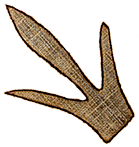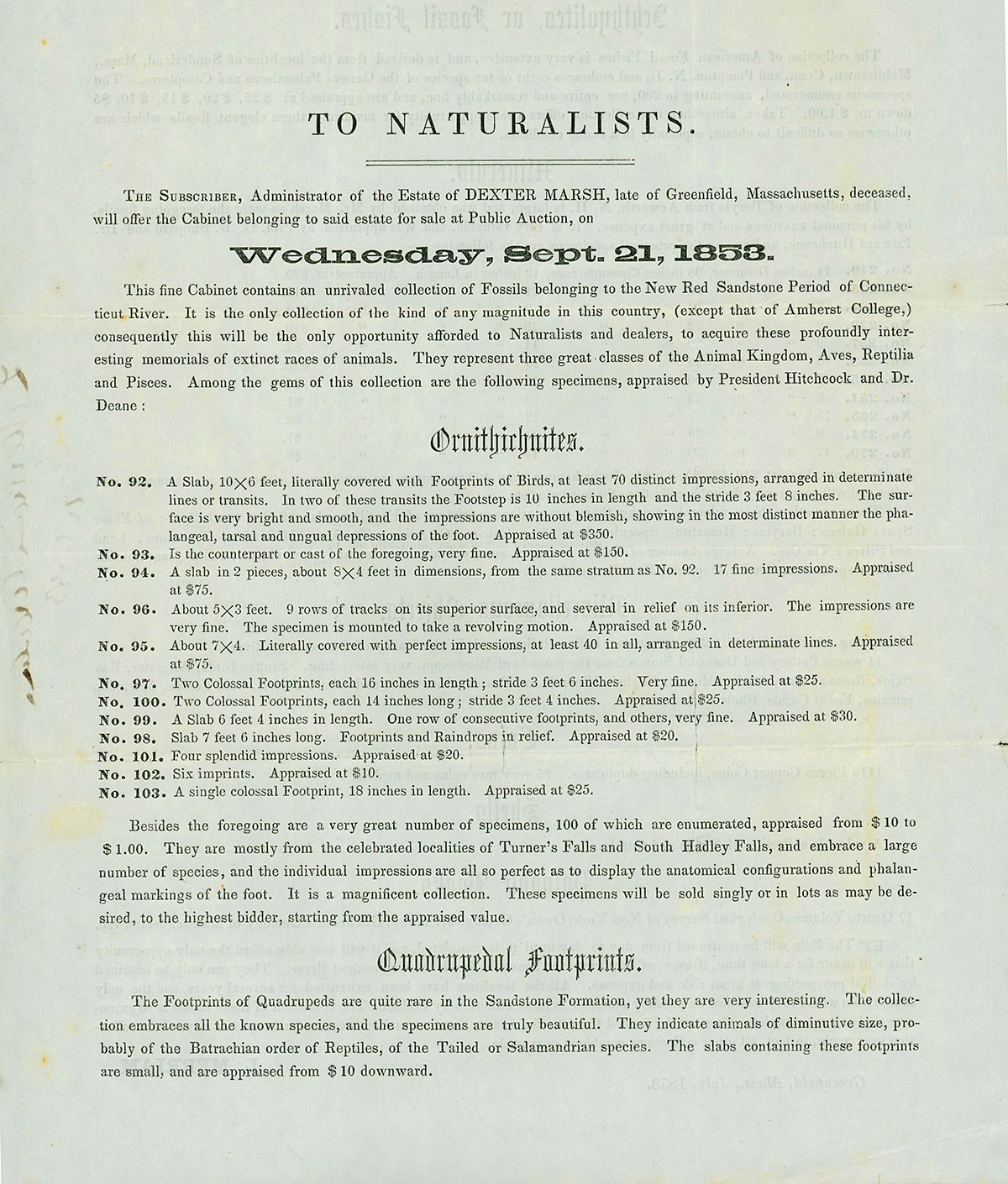 MENU
MENU
 MENU
MENU

When Dexter Marsh died, an auction was held to sell his collections, despite his hope that it could be kept together. The listing continued on to the other side of the poster. Image courtesy of Pocumtuck Valley Memorial Association Library.
Dexter Marsh was only 47 years old when he died on April 2, 1853. His health had been failing for at least two years; his contemporaries believed this was due to overwork. He left his widow Eunice with five children ranging in age from 18 years to an infant less than three months old.
Several weeks after his death, one of Eunice's church brethren dedicated a poem to her in the local newspaper, comforting her in her loss and noting, in a subtle reference, "He has left his dear haunts and gone to his rest, / Yet thou lovest where often his foot-steps have pressed." Eunice cut the poem out and pasted it into the back of the Visitors Book, adding a few notes of her own mourning.
Marsh had closed the museum down in 1852, realizing he did not have the money or health to sustain it. He hoped that the town of Greenfield would purchase the collection whole, but the town refused. James Deane and Edward Hitchcock assessed its value for auction. Thomas T. Bouvé, Curator of Geology for the Boston Society of Natural History, visited in May to see what his organization might be interested in purchasing. Other visitors came, including a state senator, presumably on a similar mission.
The auction reaped over $3,000 (close to $100,000 in 2016 dollars) for the Marsh family, with the largest purchases made by Amherst College and the Boston Society of Natural History. The most expensive single purchase was by Francis Alger, a long-time member of the society.
It was far too early an ending to the life of this ingenious, persevering, inventive man, but he left quite a legacy. Part of his collection can be seen today at the Beneski Museum of Natural History, at Amherst College. Some of the specimens at the Boston Society of Natural History were transferred to Harvard University's Museum of Comparative Zoology in the 1930s, and a few may have been incorporated into the collection of the Boston Museum of Science.